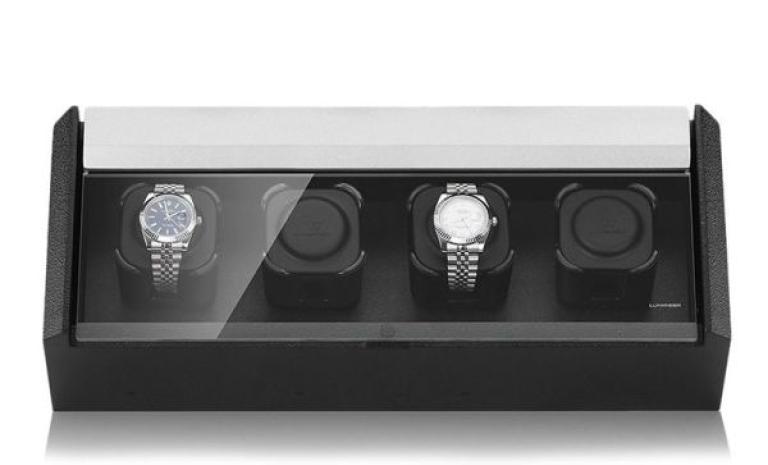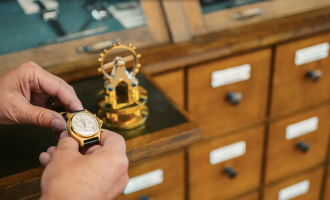
Watch winders – a useful tool or a superfluous toy?
Imagine driving your car into the garage, putting a brick on the accelerator, locking the garage and going into the house. Nonsense, you say? It's true – but it's not uncommon for many automatic wristwatches to suffer this fate and end up in a watch winder running in brick mode.
First of all, what is a watch winder?
This device, also known as a watch winder, keeps automatic watches in motion and ensures that the winding rotor of the movement winds the mainspring even when the watch is not on the wearer's wrist. In the following article we will look at the advantages and disadvantages of such a device.
1. Convenience and comfort
The biggest advantage of a watch winder is probably convenience. Anyone who owns several automatic watches and changes them regularly will be familiar with the problem: watches that are not worn stop, and the next time they are worn, the time, date and possibly other complications such as moon phase or other calendar displays have to be reset. A watch winder eliminates this hassle, as the watch is always running and all displays continue to function correctly.
2. Value retention and maintenance
Some movements – especially those with a perpetual calendar that cannot be adjusted manually by the user – benefit from a watch winder. This prevents the displays from becoming out of sync and requiring time-consuming re-adjustment of the calendar displays by the watch manufacturer. In addition, a watch winder keeps the lubricants in the watch moving and prevents, for example, the oils from being distributed unevenly in the movement. Today, oils no longer resinify when the watch is stopped; modern watch oils are synthetic and tend to evaporate instead. This is the case whether the watch is moving or stationary.
3. Style and aesthetics
Modern watch winders are often more than just functional devices – they are also elegant storage solutions for displaying a watch collection. Many watch enthusiasts appreciate this and enjoy the visually appealing presentation of their timepieces.
Disadvantages of watch winders
1. Mechanical stress
We remember the brick on the accelerator: it's not good for the car. It's the same with automatic watches – each movement has its own characteristics. The differences lie in the number of rotor revolutions required for a full wind and whether the rotor winds in one direction only (as in the movements in our DBF002, DBF008 and DBF007 or an ETA Valjoux 7750) or in both directions, as in our Bidynator movements in the DBF006 or DBF009. A good watch winder should be able to adjust these parameters.
Why is this so important? An automatic watch uses a mainspring that can slip in the barrel when fully wound. This prevents the spring from breaking and damaging the automatic module of the movement.
However, if the watch winder is set to a simple standard mode of, say, 1.500 revolutions per day, the mainspring will constantly slide along the barrel wall. The lubricants used there cannot withstand this constant stress indefinitely – abrasion quickly causes damage to the barrel. Repairing this damage can be expensive and usually means replacing the entire barrel.
2. Cost factor
High quality watch winders do not come cheap. Inexpensive machines usually have only a few modes, which can quickly damage the movement. Anyone considering such a purchase should carefully consider whether the slight advantage in convenience outweighs the cost.
If it's just a gimmick, it's better to do without!
If you wear your automatic watches regularly – and we mean even occasionally every few weeks – a watch winder is often unnecessary. In such cases, it is sufficient to wind the watch by hand for 20 to 30 turns, as required, and then set the time and date.
Only owners of large complications with a perpetual or full calendar will benefit from using a watch winder. This ensures that the mechanically pre-programmed calendar displays run smoothly, and eliminates the need for costly adjustments by the watch manufacturer.


